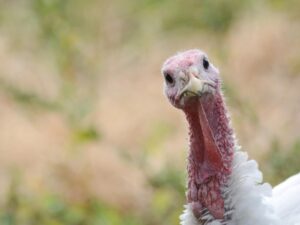
A recent study has revealed that Iyengar yoga, a popular form of yoga among older adults, may be linked to a higher incidence of falls among Australians aged 60 and over. Conducted over a 12-month period, the study involved 700 participants who were divided into two groups: one engaged in an online instructor-led Iyengar yoga program, while the other participated in a self-guided seated relaxation yoga program.
The research found that participants in the Iyengar yoga group experienced 33 percent more falls than those in the relaxation group. However, the study noted that the increase in falls did not lead to a higher number of injuries. This finding raises questions about the suitability of Iyengar yoga for fall prevention in older adults.
Understanding the Study’s Methodology
The study was designed to explore the effects of Iyengar yoga on balance and fall prevention. Iyengar yoga was selected due to its reputation as a gentler form of yoga, emphasizing long-held postures and the use of props like blocks and chairs to aid stability. This contrasts with more dynamic styles such as Vinyasa yoga, which involves continuous movement between poses.
Participants were asked to report their falls monthly throughout the study. Interestingly, the research suggested that the increased fall risk was particularly pronounced among individuals who had not previously experienced falls, those who were highly active, and those who rated their balance as good or excellent.
Exploring the Reasons Behind Increased Falls
Professor Tiedemann, a lead researcher on the study, offered insights into why Iyengar yoga might lead to more falls. “We suspect that one of the reasons for the higher incidence of falls could be that the people who were in the Iyengar yoga group gained more confidence and so pushed themselves to do activities outside of the class that they normally wouldn’t do,” she explained.
Additionally, the nature of Iyengar yoga, which involves holding fixed positions, may not effectively enhance balance or the ability to perform daily activities that help prevent falls. The study also highlighted the potential impact of the online delivery format necessitated by the COVID-19 pandemic. According to Dr. Juliana Oliviera, “The intention was to run the classes in person but, because the study took place during COVID-19, we had to move classes online. As a result, the instructors often prioritised safety over introducing more challenging exercises.”
Implications for Older Adults and Yoga Practice
While the study suggests that Iyengar yoga may not be the most effective form of exercise for fall prevention, it did highlight other health benefits. Participants in the yoga group reported improvements in personal fitness goals, such as enhanced ability to rise from the floor or increased confidence in using stairs.
Dr. Oliviera emphasized that while Iyengar yoga might not prevent falls, it can still offer other health advantages. “Older people who want to try yoga should speak to their doctor to get advice about how to stay safe while exercising,” she advised. The researchers also recommend other balance-focused exercises like squats, lunges, and heel-raises as effective alternatives for reducing fall risk.
Looking Forward: Balancing Benefits and Risks
The findings of this study underscore the complexity of fall prevention among older adults. As Professor Tiedemann noted, “The results demonstrate the complexity of preventing falls in older age, which occur due to a combination of the individual’s physiology, the activity they are undertaking and their environment.” This highlights the need for a personalized approach to exercise and fall prevention strategies.
As the study concludes, it opens the door for further research into the most effective forms of exercise for older adults. Meanwhile, older individuals interested in yoga are encouraged to consult healthcare professionals to tailor their exercise routines to their specific needs and capabilities.
Ultimately, while Iyengar yoga may not be the panacea for fall prevention, its role in promoting overall health and well-being remains significant. This study serves as a reminder of the importance of considering both the benefits and potential risks of any exercise regimen for older adults.







